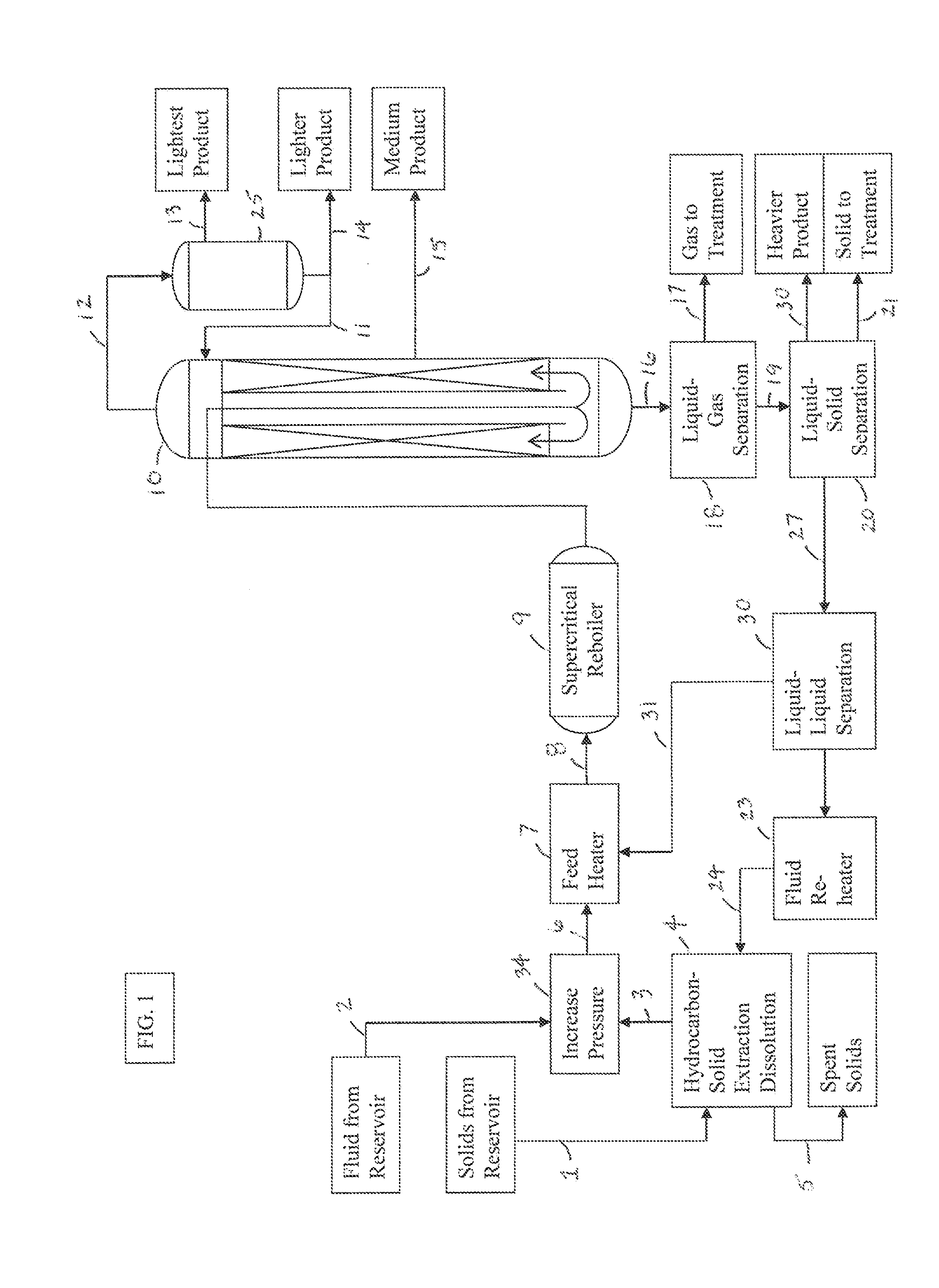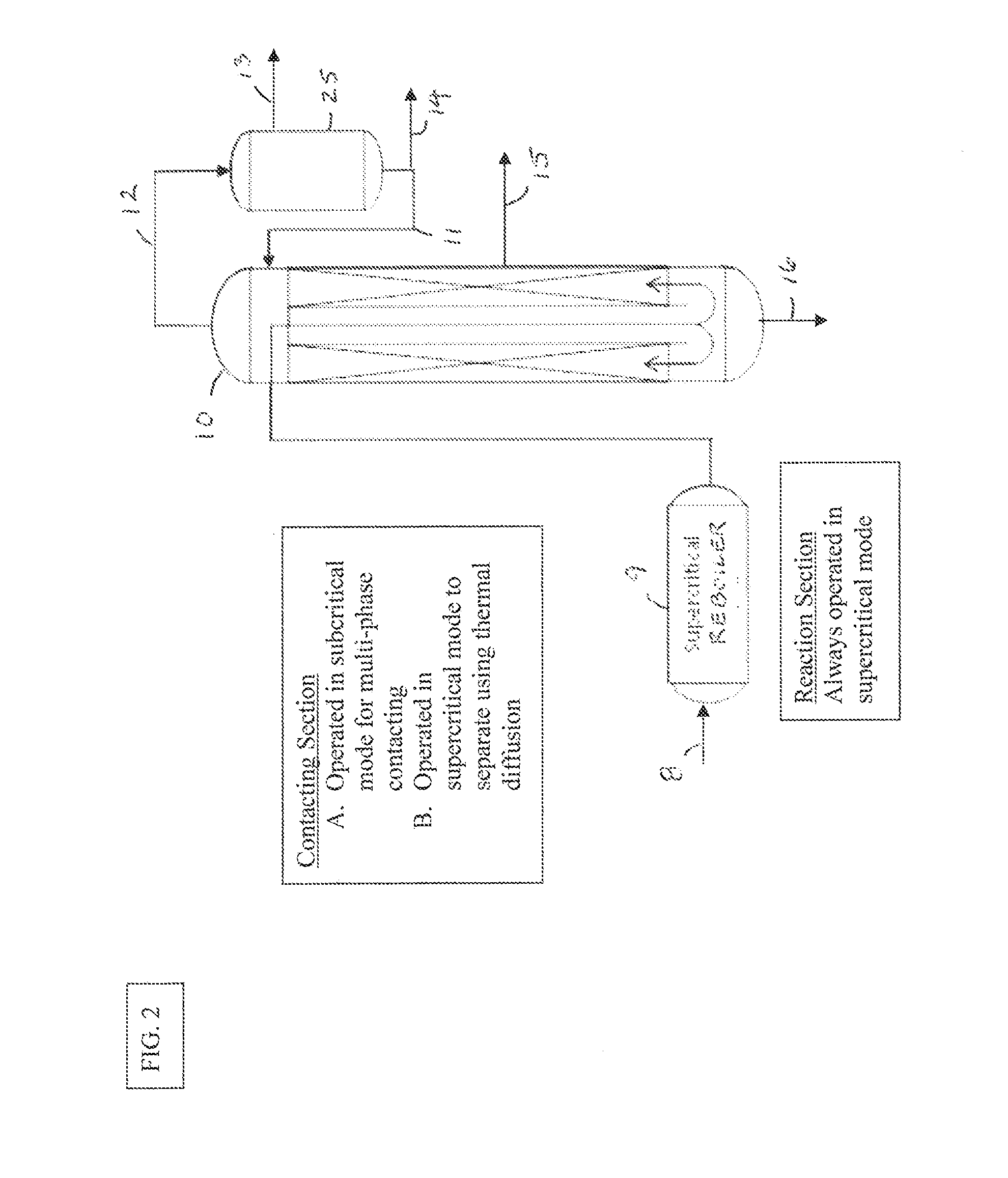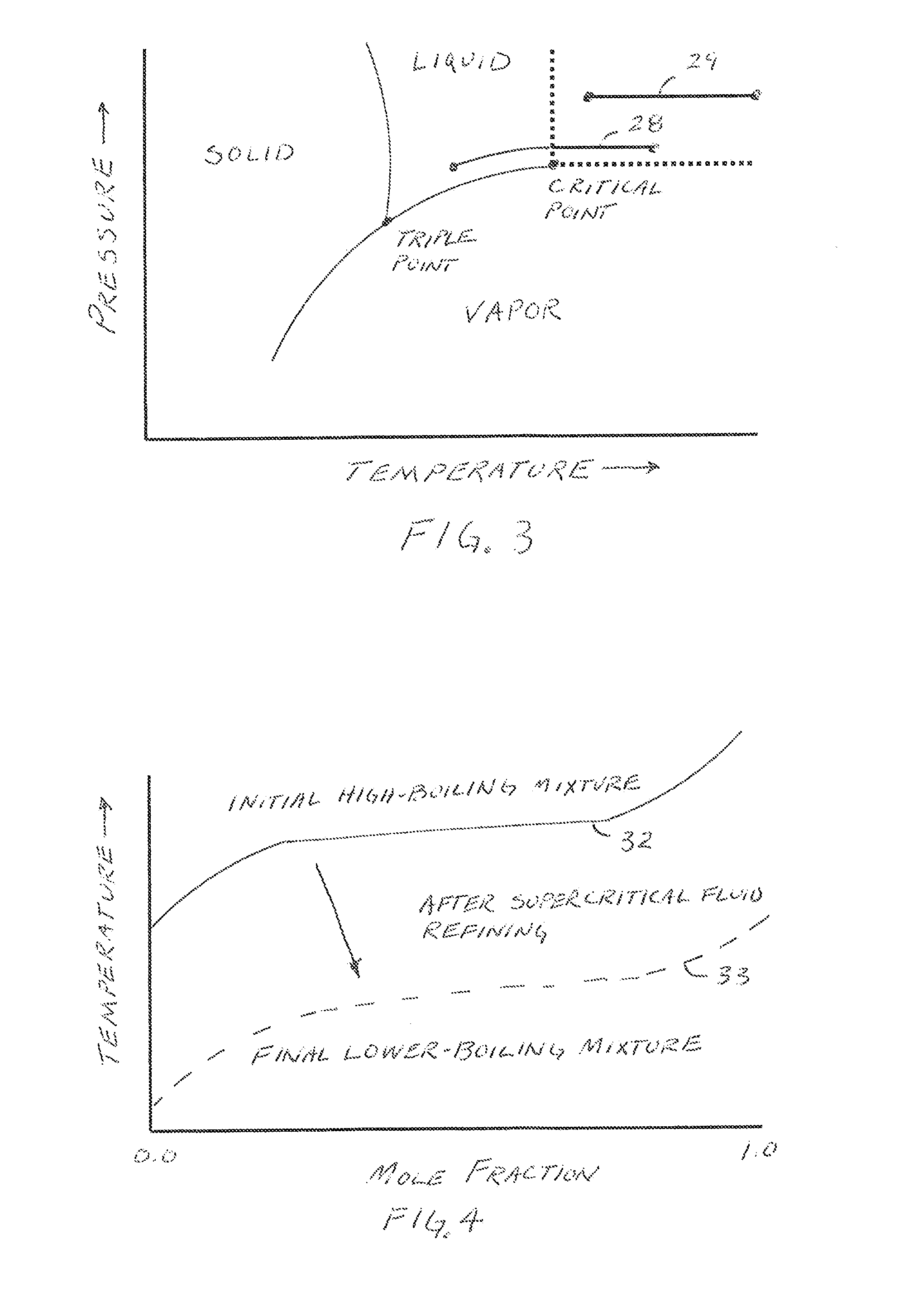Using supercritical fluids to refine hydrocarbons
a technology of supercritical fluids and hydrocarbons, applied in the direction of hydrocarbon oil treatment, chemical refining, tar working up, etc., can solve the problems of complex equipment, difficult to find and develop readily available medium to light crude oil reserves, and complex refinery infrastructure, etc., to enhance process operators' safety, reduce processing complexity, and improve process control
- Summary
- Abstract
- Description
- Claims
- Application Information
AI Technical Summary
Benefits of technology
Problems solved by technology
Method used
Image
Examples
Embodiment Construction
[0034]FIG. 1 shows a process schematic of the best mode contemplated by the inventor of using supercritical fluid or fluid mixtures, typically water 2,3 to refine heavy oil and bitumen-like compounds 9,10 according to the concepts of the present invention. As can be seen from the drawings, a supercritical fluid or fluid mixture 24 dissolves heavy oil or bitumen-like compounds 1 from a solid substrate 4. The supercritical fluid with hydrocarbons 3 can be mixed with a thermal recovery fluid, typically steam 2 from the reservoir or used alone as a feedstock 6 is further pressurized in unit 34. The mixture 6 consisting of a fluid, typically water or water mixture and heavy hydrocarbons is sent to a heating unit 7. The heating unit 7 heats the fluid to temperatures in the supercritical regime at that pressure for that fluid, delivers the stream 8 to a supercritical reboiler 9, and attached multi-phase contacting unit 10. Product is removed from the multi-phase contacting unit 10 dependin...
PUM
| Property | Measurement | Unit |
|---|---|---|
| temperature | aaaaa | aaaaa |
| pressures | aaaaa | aaaaa |
| temperature | aaaaa | aaaaa |
Abstract
Description
Claims
Application Information
 Login to View More
Login to View More - R&D
- Intellectual Property
- Life Sciences
- Materials
- Tech Scout
- Unparalleled Data Quality
- Higher Quality Content
- 60% Fewer Hallucinations
Browse by: Latest US Patents, China's latest patents, Technical Efficacy Thesaurus, Application Domain, Technology Topic, Popular Technical Reports.
© 2025 PatSnap. All rights reserved.Legal|Privacy policy|Modern Slavery Act Transparency Statement|Sitemap|About US| Contact US: help@patsnap.com



